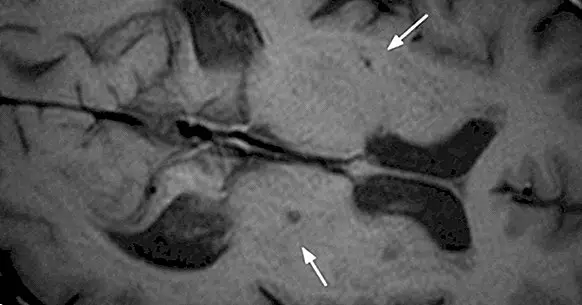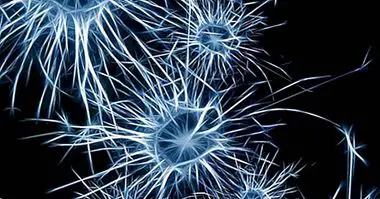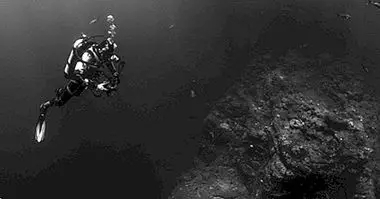Lacunar infarction: causes, symptoms and treatment
Stroke (ACV) they consist of an interruption of the flow of blood sent to the brain due to various causes. When this flow is paralyzed the brain stops feeding on oxygen and nutrients, which leads to damage or death of brain cells in a specific area of the brain.
But there are different types of stroke, usually these attacks damage brain tissue in the outer or superficial area of the brain. But nevertheless, When these damages occur in the most internal structures of the brain, it is called lacunar infarction . We will talk about this type of alteration in the following lines.
- Maybe you're interested: "Cerebral embolism: types, symptoms, sequelae and causes"
What is a lacunar infarction?
Lacunar infarction refers to a type of stroke in which one of the arteries that irrigate blood in the internal structures of the brain is obstructed , leaving the brain without the supply of oxygen and nutrients necessary for it to work.
The arteries susceptible to damage in a lacunar infarction are smaller and therefore more fragile than the rest, they come directly from a main artery which carries blood with a lot of pressure.
When a person suffers a lacunar infarction, cells in a relatively limited area of the brain begin to get damaged or die for lack of oxygen. Taking into account that a large number of internal brain structures cooperate in the communication and coordination of body movements, a lacunar infarct can pose a significant risk of causing a disability.
In comparison with the other types of stroke, lacunar infarcts represent 20% of the brain infarcts suffered by people.
- You may be interested: "Parts of the human brain (and functions)"
Symptoms of lacunar infarction
Since different brain areas control various functions such as movement, sight, speech, etc., the symptoms that warn a person that they are suffering from a lacunar infarction will depend on the area of the brain that is being damaged. These symptoms include:
- Weakness or paralysis on face, arm, leg or foot
- Weakness or paralysis of eye muscles
- Sudden muscle numbness
- Problems in movement
- Speech problems
If a person suffering from high blood pressure does not receive any type of treatment, it is very likely that he suffers a series of lacunar infarctions that lead to the appearance of additional symptoms such as dementia or emotional behavior.
Also, if the person perceives one or more of the above symptoms should be alert, since this could also mean that you are about to suffer a more serious cardiovascular accident.
Types of lacunar syndromes
As mentioned above, both the symptoms and the consequences may vary depending on the area of the brain affected by the lacunar infarction.
There are five main lacunar syndromes, from a list of approximately 85. They are:
1. Pure motor syndrome
In this type of accident lacunar the person experiences a paralysis or decrease in muscle vigor that affects equally to an entire side of the body. This paralysis is called hemiparesis and affects approximately 50% of people who have suffered a lacunar infarction.
2. Ataxic hemiparesis
This consequence is characterized by a partial paralysis, or paresis, of variable severity and great difficulty in the coordination of movements , or ataxia, of the extremities, legs being seen more often than arms.
3. Clumsiness in the hands and dysarthria
In this case the person suffers a decrease in dexterity and accuracy of hand movements. Further, This deficit is accompanied by difficulties in articulating sounds or words caused by a weakness or facial muscle paralysis, also known as dysarthria.
4. Pure sensory syndrome
In the pure sensitive syndrome the person experiences a continuous or transient numbness on one side of the body . Also, you may suffer alterations in sensitivity that cause discomfort such as pain or burning sensation in the affected part of the body.
5. Motor-sensory syndrome
The person suffering from sensory-motor syndrome due to a lacunar infarction suffers a mixture of symptoms of hemiparesis and hemiplegia . These symptoms include a decrease in the strength of one side of the body, along with a paralysis and a sensory alteration, all on the same side of the body.
- Related article: "Hemiparesis: types, symptoms, causes and treatment"
Causes and risk factors
There are a number of diseases and conditions associated with the appearance of lacunar infarcts. Some of the most significant causes are:
Hypertension problems
It is the most common cause. The fragility of the arteries of lacunar infarctions carries a very high risk for people with very high blood pressure.
Diabetes
The deterioration of veins due to diabetes is a risk factor for the person to suffer one of these heart attacks.
Heart diseases
Diseases such as ischemic heart disease and atrial fibrillation are two causes of weight to suffer a lacunar infarction.
In addition, other risk factors that predispose people to suffer at some point a lacunar infarction are:
- Sedentary life
- Unhealthy diet
- Elevated cholesterol levels
- Smoking
- Consumption of alcoholic beverages
- Consumption of drugs
- Sleep apnea
- Pregnancy
Treatment and prognosis
An emergency intervention in a person who has just suffered a lacunar infarction increases the chances of surviving the accident and, in addition, to minimize the impact that this may have.
If it is detected and intervenes before three hours after the onset of symptoms, anticoagulant drugs should be sufficient to improve blood circulation. However, if a heart attack is more severe or takes longer to act, it will be necessary to inject the drugs directly into the area of the affected brain.
Usually, people who have suffered a lacunar infarction need a general rehabilitation which includes the following aspects:
- Physiotherapy sessions to restore motor skills
- Neuropsychological rehabilitation to favor cognitive functions
- Occupational therapy to facilitate the day to day of the patient
- Logopedic intervention in case of language damage
- Psychological therapy to work the emotional aspects of the consequences of the infarction *** Pharmacological therapy ** to eliminate the underlying causes of the lacunar accident
Unlike other major cerebrovascular accidents, lacunar infarction is associated with a higher rate of recovery, presenting improvements in the hours or days following the infarction.



















